furno
New Member

Posts: 23
|
Post by furno on Oct 31, 2018 13:06:37 GMT -8
Helllo everybody. I want to build a heating furnace for my country house. As a core for the stove, I chose the rocket firebox. I built several models of the stove core and the best properties showed model number 6. The core is made of fireclay bricks 230x115x40 mm and 300x150x65 mm. I use a gap in front of the door for the supply of primary air in the main stage, . The grate is used in the second stage to burn coal. Secondary air is supplied through a 20x40 pipe to the port area. 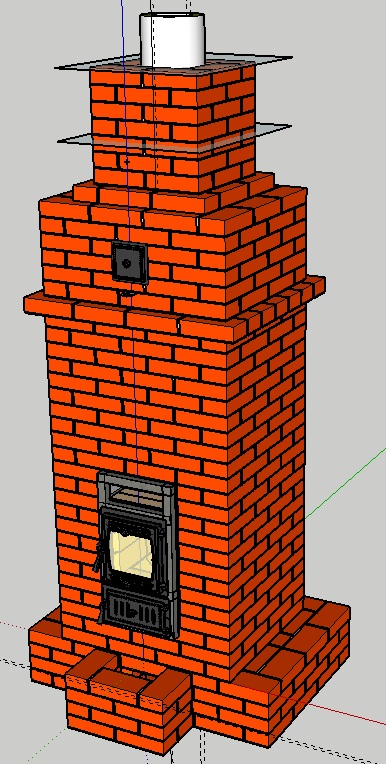 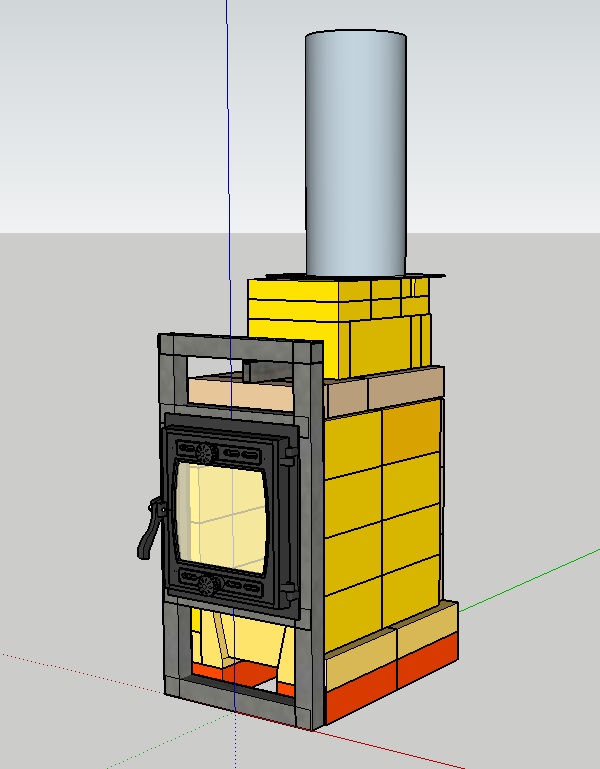 Flue gases pass through the port to the mixing chamber with secondary air. The camera is covered with cerablanket. Then, through the secondary round port, the gases leave for a short riser of 500mm. Gases pass through a difficult path through two ports and are quite turbulent. At the entrance to the riser, there are two slots located tangentially for the entry of tertiary air and turbulence of the flow in the riser. Unfortunately, I don’t have measuring instruments such as Testo. But the aluminum wire at the exit of the riser was melted. SKP lile of core : SKP file Video: www.youtube.com/watch?v=PunV3QPHwmU |
|
|
|
Post by Vortex on Oct 31, 2018 14:24:42 GMT -8
furno, The link to your SKP file is not working.
|
|
furno
New Member

Posts: 23
|
Post by furno on Oct 31, 2018 23:02:28 GMT -8
|
|
|
|
Post by pinhead on Nov 1, 2018 7:45:25 GMT -8
I'm confused... This doesn't look like any "rocket core" I've ever seen.
|
|
|
|
Post by josephcrawley on Nov 1, 2018 9:11:53 GMT -8
I still can't get to the SKP file.
|
|
furno
New Member

Posts: 23
|
Post by furno on Nov 1, 2018 10:30:02 GMT -8
I'm confused... This doesn't look like any "rocket core" I've ever seen. Are you confused by the unusual location of the port? Yes it is. But this makes little difference in essence. The basic idea remains the same as in the usual BBR. . We have a semi-gas firebox and a port that is supplied with secondary air. Next, there is a camera with thermal insulation and, attention, another round port with tertiary air. The path of the flue gases is somewhat smoothed, but due to the greater speed and two ports, the necessary quality of the mixture with air is achieved. The video shows that the output of gases is clean and hot. I still can't get to the SKP file. Download Model-6.zip --> unzip --> Model-6.skp (ver.8) --> Sketch Up 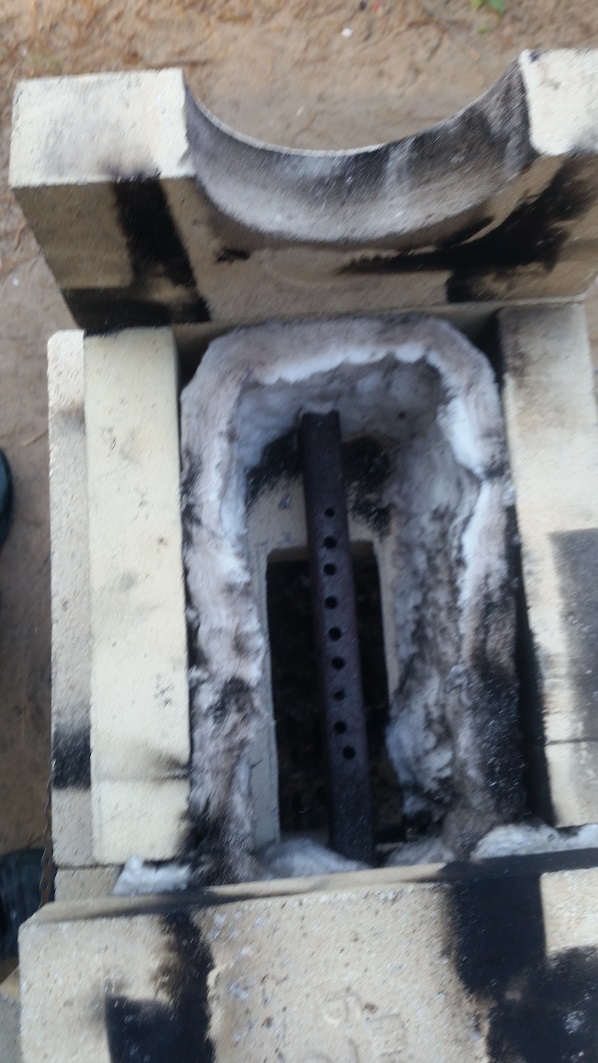 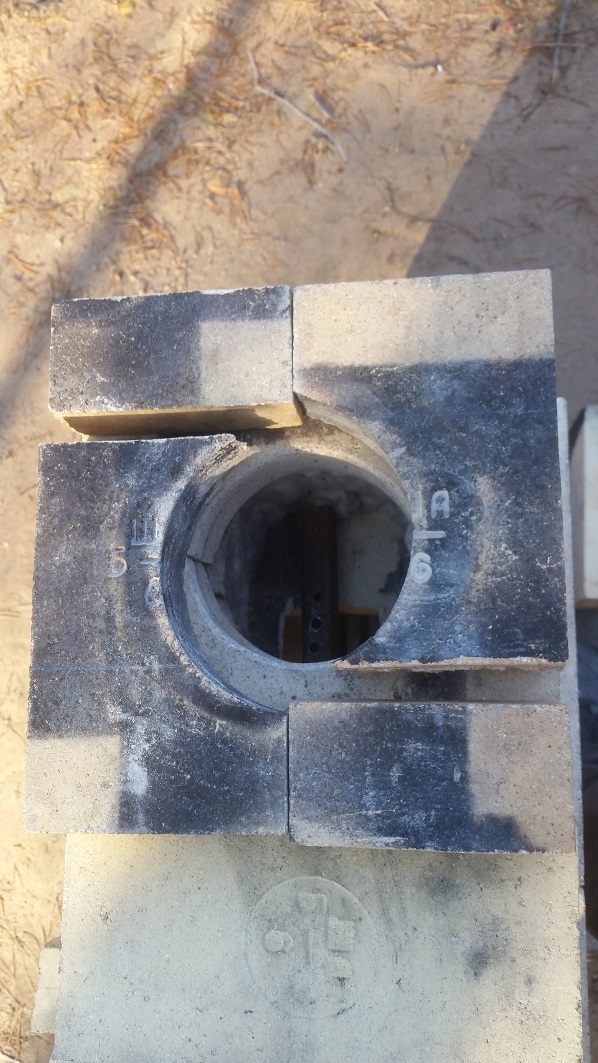 |
|
|
|
Post by josephcrawley on Nov 1, 2018 11:30:50 GMT -8
This site can’t be reached www.furno.ru’s server IP address could not be found. Sorry this is what I get when I click the link. |
|
furno
New Member

Posts: 23
|
Post by furno on Nov 1, 2018 12:10:03 GMT -8
|
|
|
|
Post by drooster on Nov 1, 2018 12:16:04 GMT -8
I watched the video, there is nothing happening in terms of high-temperature secondary combustion as far as I can see. |
|
furno
New Member

Posts: 23
|
Post by furno on Nov 1, 2018 13:16:32 GMT -8
The melting point of aluminum is 660 C. The wire has been melted. Flame over the riser is missing. This suggests that the main part of the wood gas burned. Exhaust gas is transparent. What else is needed?
|
|
|
|
Post by martyn on Nov 1, 2018 13:55:01 GMT -8
It certainly looks interesting......
|
|
|
|
Post by satamax on Nov 1, 2018 14:54:18 GMT -8
The melting point of aluminum is 660 C. The wire has been melted. Flame over the riser is missing. This suggests that the main part of the wood gas burned. Exhaust gas is transparent. What else is needed? Just 600 more degrees celcius. |
|
furno
New Member

Posts: 23
|
Post by furno on Nov 2, 2018 1:00:30 GMT -8
I want to remind you that this is only a model. It is built without clay ...: "dry build." The firebox and the riser do not have thermal insulation. Only the mixing chamber is isolated. The riser has a crack along the entire length and therefore there is excess air. If the model is folded correctly and the necessary insulation is made, the gas temperature will increase significantly
|
|
|
|
Post by peterberg on Nov 2, 2018 1:41:14 GMT -8
Making it a lot more complicated doesn't mean it would work better. Melting an aluminium thread above the riser is easy, can be done with any j-tube or batch box, even a tiny 4" model.
I don't see any advantage in your solution to achieve clean combustion. I took apart your skp model and in my opinion there could be a time frame during which the burn is running clean, in the sense of low CO content of the exhaust gases. Only thoroughly testing could determine how long that clean period really is. Provided it's build correctly without leaks in a suitable housing, bell or otherwise.
As a whole, I honestly think your design can't be classified as a rocket heater. So I'd suggest this thread to be moved to the "Other types of Stove" department.
|
|
furno
New Member

Posts: 23
|
Post by furno on Nov 6, 2018 12:14:05 GMT -8
The weather was nice on the weekend and I ran the upgraded model -6. A 150mm plastic ventilation pipe was purchased and a layer of fireclay with liquid glass was applied to it. Ceramic blanket was wound on top. After drying, this construction was tucked into a 200 mm metal pipe and a gap of 25 mm was filled with the same fiber. The plastic pipe was taken out and turned into a riser with a thin layer of fireclay on the inner surface of the pipe. 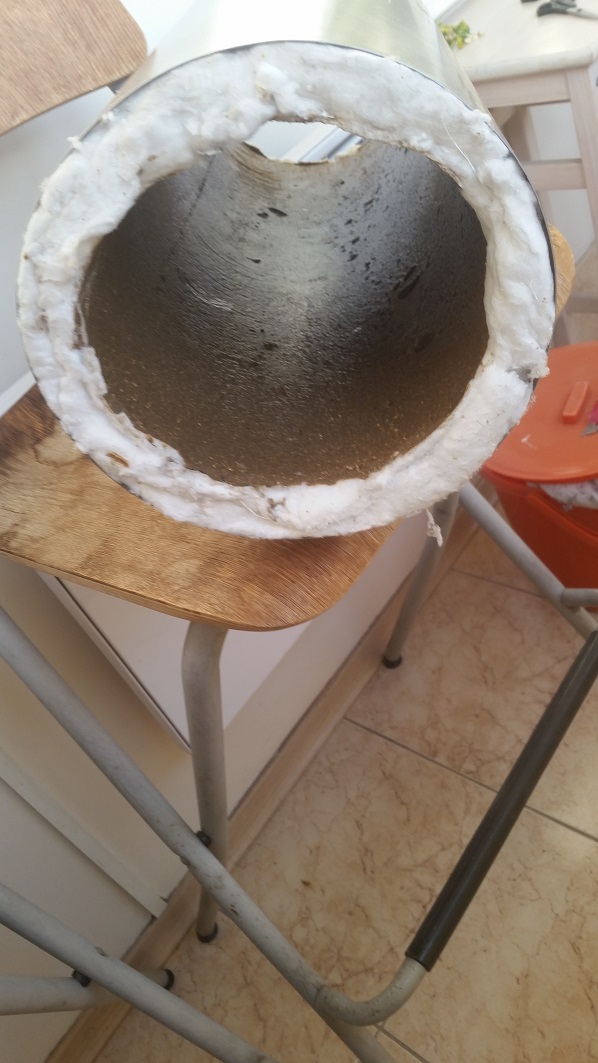 ![]() The furnace core is stable, but after passing through the peak of the pyrolysis gas outlet, the temperature drops slightly. But if at this moment to switch to the grate mode, the temperature rises again. The burning in the operating mode is absolutely clean and only by a light rustling sound can one understand that the stove is working. A thermocouple tester showed 830-840 C at the riser cut. But by the tint colors on the riser tube, it can be seen that the maximum temperature in the first lower third of the riser. I believe that there is about 1000 gr. There is another interesting observation on the temperature distribution. When pieces of molten wire fall into the bottom of the grain, there they no longer melt. It turns out that in the area of the first port and in the mixing chamber the temperature is much lower. And the maximum is observed at a height of 10-15 cm from the second port. I did not try to get the maximum temperature of the gases. I wanted to get clean exhaust gas. This was done successfully. |
|